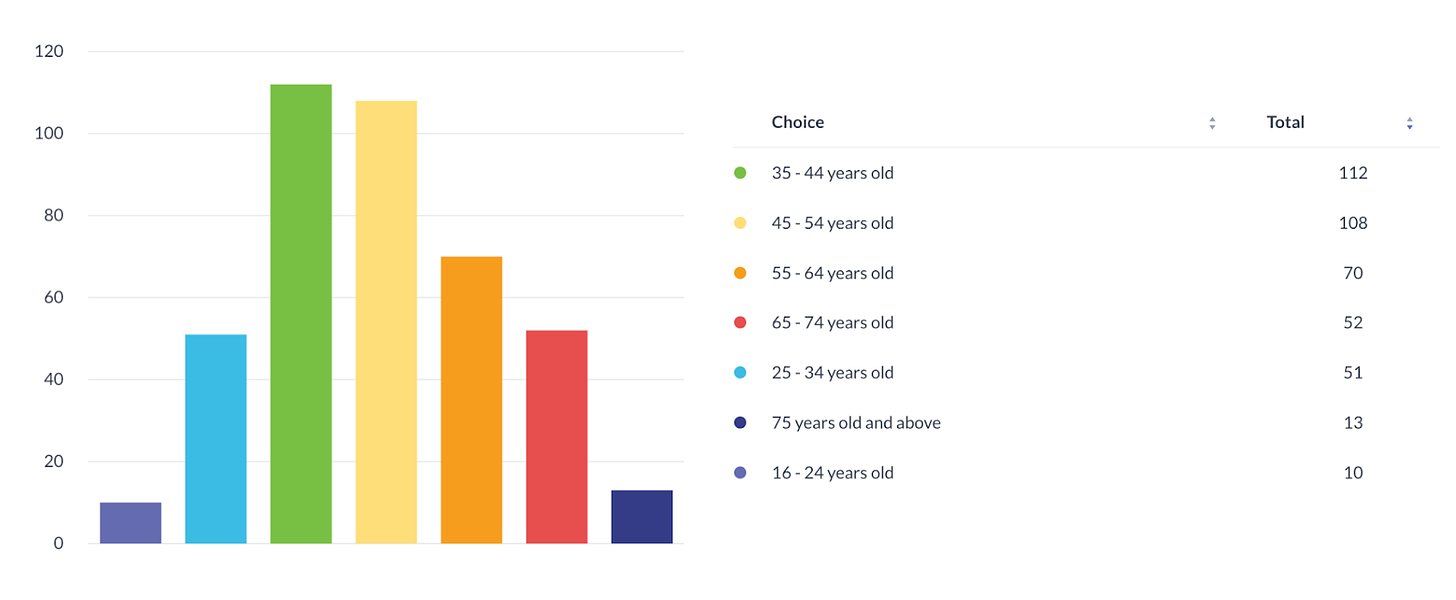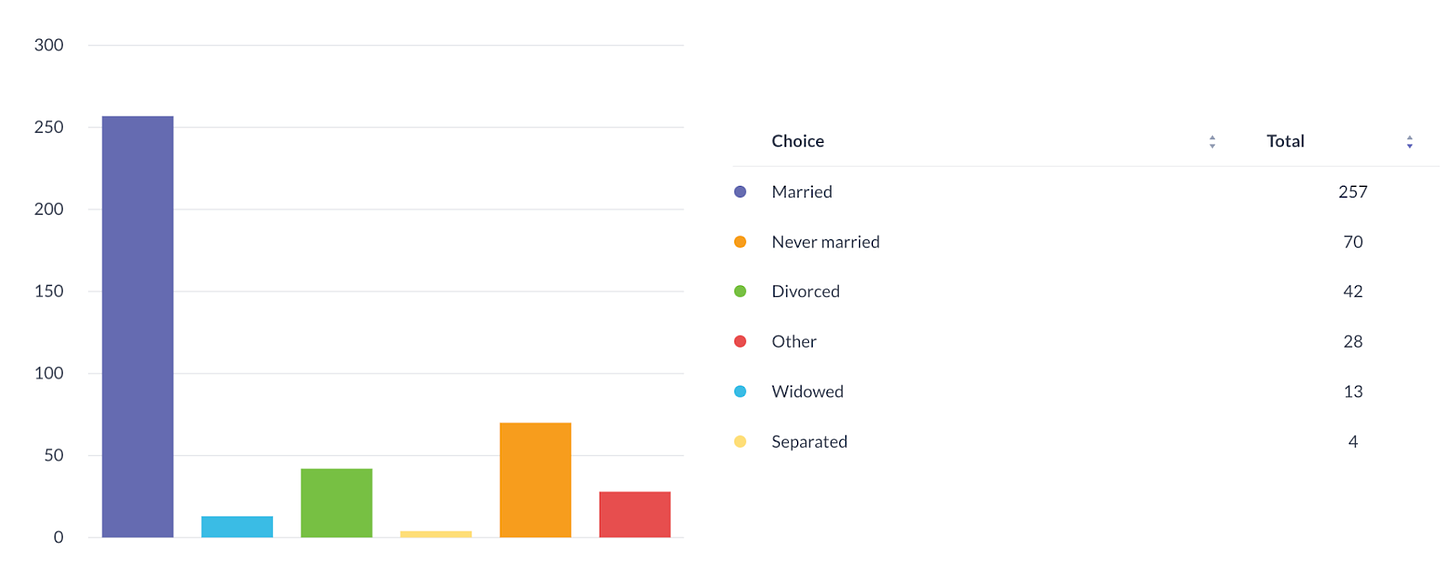Data to Drive Your Substack: Understand Your Readers for Greater Engagement
Explore insights from the first-of-its-kind Substack Reader Behavior Survey
Want to know what’s really going on in your Substack data? Join me for a live workshop (recording available), “Audit Your Substack Data Like a Strategist.” I’ll teach you the exact methods I use in my 5x5 editorial audit and a pricing gut check.
Today, I'm excited to share brand new data from the Substack Reader Behavior Survey. This survey was designed with the goal of gathering insightful data from the platform's diverse readership, and it received an impressive 416 responses. It dives deeply into the habits, preferences and behaviors of Substack readers—63% of whom identified as readers—offering a rare glimpse into the minds of those who shape the success of newsletters on the platform.
Alongside this fresh demographic data, I’ve also organized the entire Substack Reader Behavior Survey into a comprehensive and easily navigable index below, exclusively available to my 🌙 paid members. This index is designed to be a powerful resource for newsletter publishers who want to understand their audience on a deeper level and make decisions that truly resonate with their readers.
How Newsletter Publishers Can Use This Data
Identify Audience Segments: Use the demographic data to identify key segments within your audience. This can help you tailor essays, promotions and engagement strategies to different groups, ensuring that your newsletter speaks directly to the needs and interests of your readers.
Refine Newsletter Strategy: Explore the sections on Substack usage, media consumption and subscription behavior to refine your newsletter strategy. Understanding how your readers interact with Substack and what they value most can guide you in creating a newsletter experience that keeps them engaged and coming back for more.
Optimize Monetization Tactics: The insights on paid subscription preferences can be invaluable for optimizing your pricing and promotional strategies. Use this data to experiment with pricing models, discounts and offerings that align with your readers’ expectations and increase conversions.
Enhance Reader Engagement: Dive into the sections on reader engagement and newsletter preferences to discover what makes your audience feel valued. Use this knowledge to foster stronger connections with your readers, encouraging loyalty and long-term engagement.
By leveraging this index, you can transform your approach to publishing on Substack, making data-driven decisions that enhance your readers' experience and grow your newsletter's impact. If you’re ready to unlock these insights, consider upgrading your subscription to gain full access to the index.
How the Substack Reader Behavior Survey Index Is Organized
Demographics and Personal Information
Questions: 1, 2, 4, 5, 6, 7, 8, 9, 10
Focus: Understanding the background of the respondents, including their age, gender, education, income and family status.
Substack Usage and Experience
Questions: 3, 11, 12, 13, 14
Focus: Exploring how respondents engage with Substack, their motivations for using the platform and their content consumption habits.
Media Consumption and Social Media Usage
Questions: 15, 16, 17
Focus: Investigating broader media and social media consumption patterns, preferred news outlets and the role of social media in respondents' lives.
Paid Subscription Preferences and Behavior
Questions: 18, 19, 20, 21, 22, 23, 24, 25, 26, 28, 32
Focus: Delving into respondents' attitudes and behaviors related to paid subscriptions on Substack, including their satisfaction with current subscriptions, budget considerations and what drives them to subscribe or unsubscribe. This theme also covers expectations from paid subscriptions and what makes respondents feel valued as paying subscribers.
Reader Engagement and Content Preferences
Questions: 27, 29, 30, 31
Focus: Understanding how respondents engage with content, what they value from creators and their preferred frequency of communication from publications.







